Sorry, Black Holes Aren’t Actually Black

Physicists sure do give counterintuitive names to the things they find.
Most of us are confounded by the idea of relativity when we first encounter it. Objects don’t just move through space, but through time as well, and their motions through both are inseparably intertwined into the fabric of spacetime. Moreover, when you add gravity into the mix, you find that mass and energy affect the curvature of spacetime by their presence, abundance, density and distribution, and that curved spacetime dictates how matter and energy move through it.
If you gather enough mass together in a particular volume of spacetime, you’ll create an object known as a black hole. Surrounding every black hole is an event horizon: the boundary between where an object could escape from the black hole’s gravitational pull and where everything irrevocably falls towards the central singularity. But despite that no objects from inside the event horizon escapes, black holes aren’t actually black. Here’s the story of how.
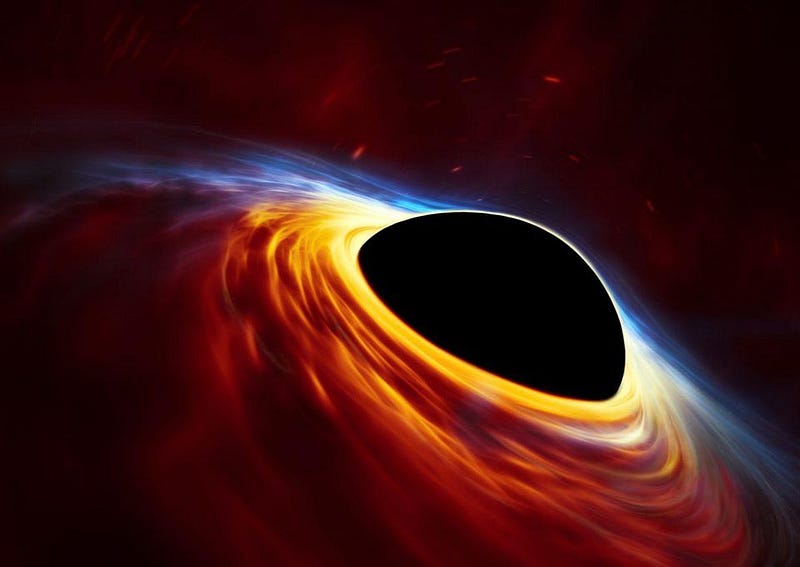
When General Relativity was first presented to the world in 1915, it revolutionized our understanding of space, time, and gravitation. Under the Newtonian picture, we had previously viewed space and time both as absolute entities: it was as though you could put a coordinate grid on over the Universe and describe every point with three spatial coordinates and one time coordinate.
The revolution that Einstein brought was twofold. First, these coordinates were not absolute, but relative: every observer has their own position, momentum, and acceleration, and observes a unique set of space-and-time coordinates that are distinct from all other observers. Second, any particular coordinate system doesn’t remain fixed over time, as even observers at rest will be pulled by the motion of space itself. Nowhere is this more evident than around a black hole.

Instead of viewing space as a fixed network of three-dimensional streets, it’s perhaps more accurate to view space as a moving walkway. No matter where you are in the Universe, the space beneath your feet is being dragged by all the gravitational effects at play. Masses cause space to accelerate towards them; the expanding Universe causes unbound objects to speed away from one another.
Outside a black hole’s event horizon, any matter gets attracted towards the black hole, but collisions and electromagnetic interactions can accelerate that material in a variety of directions, including to funnel it away from the black hole itself. Once you cross inside the event horizon, however, you can never escape. The space beneath your feet accelerates towards the singularity faster-than-light. Although this sounds like science fiction, we’ve actually imaged a black hole’s event horizon. Lo and behold, just as Schwarzschild predicted in 1916, event horizons are real.
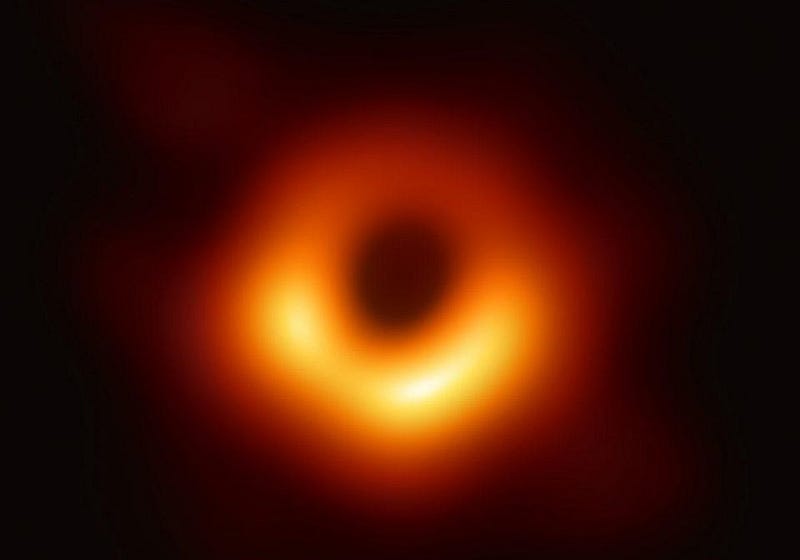
This is a property of relativity that isn’t generally appreciated. You’ll often hear it stated that nothing can move faster than the speed of light, and this is true, but only if you understand what moving means. Motion always has to be relative to something else; there’s no such thing as absolute motion. In the case of moving relative to the speed of light, that’s motion relative to the fabric of space itself: relative to the motion that a particle released from rest would experience.
Matter and energy cannot move faster-than-light, but space itself has no such restrictions. Outside of an event horizon, the fabric of space moves slower than the speed of light; you can still escape from a black hole’s gravitational pull by accelerating quickly enough. Inside the event horizon, though, all paths than matter or light can take will only lead it to one place: the central singularity.
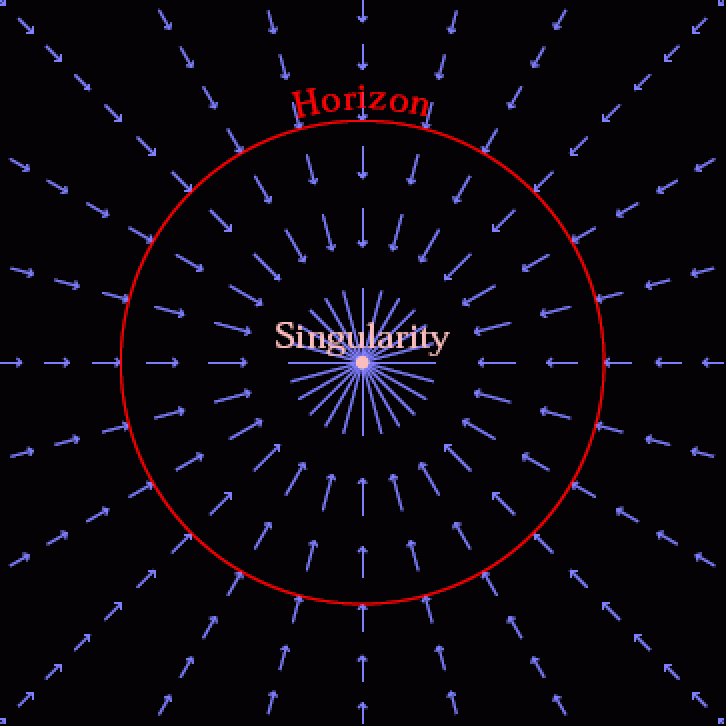
With that in mind, you might start wondering about just how black these objects — black holes — truly are. If nothing that crosses the event horizon can ever get out again, you might think that it’s only the matter that remains outside the event horizon that’s ever viewable. That the Universe outside the event horizon may still be visible, but the event horizon itself will be a completely black surface, devoid of any light of any type. You might think that, since nothing that falls in can escape, black holes emit nothing at all.
If that’s what you think, you’re not alone: this is one of the most common and popular misconceptions of all time concerning black holes. But if you really think that black holes are completely black, and that you can never see anything that falls into one, there are two things you must consider. Either one ought to be enough to change your mind.
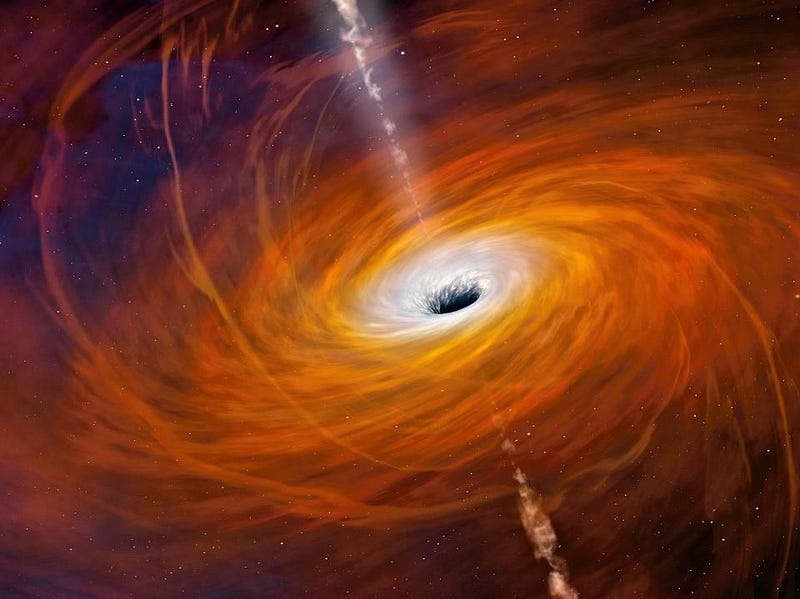
1.) Think about the matter that falls into a black hole. Black holes grow in mass whenever anything from outside the event horizon crosses the event horizon and falls in. Even though black holes don’t actually suck matter into them, they do grow whenever particles cross into the region of no return surrounding them. If you were the infalling matter that entered inside the event horizon, once you crossed over, it’s true that you’d never come back.
But what if you remained outside the event horizon, and watched someone else fall in? Remember that space itself is moving, that space and time are related, and that the phenomena described by relativity are real and must be reckoned with. At the event horizon itself, space is moving at the speed of light. Which means, to someone infinitely far away, time at the event horizon no longer appears to pass.

When you observe something else fall into a black hole, you’d see that the light emitted from them would get fainter, redder, and their position would asymptote towards the event horizon. If you could continue to observe the faint photons they emitted, they’d appear to get stretched out in space and stretched out in time. They’d experience gravitational redshift, with the light emitted from them going from visible to infrared to microwave to radio frequencies.
Any yet, it will never disappear entirely. There will always, infinitely far into the future, be light to observe from their fall into a black hole. Even though photons are quantized, there is no limit to how low their energy can be. With a large-enough telescope sensitive to long-enough wavelengths, you should always be able to see the light from anything that fell into a black hole. As someone falls in, their light never completely goes away.
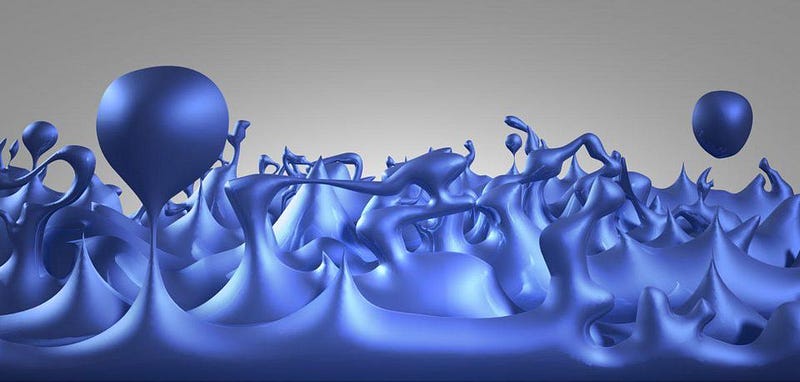
2.) Think about the quantum nature of space outside the event horizon. If you’re in purely empty space, where there’s no matter, energy, or radiation occupying your space, you might think that all inertial (non-accelerating) observers would agree on what the properties of that space is. But if you’re talking about the space outside of a black hole, that’s not possible.
Why not? Two reasons, in tandem, ensure it:
- the vacuum of perfectly empty space isn’t completely empty, as it unavoidably contains quantum fluctuations,
- and the fact that the fabric of space itself is accelerating at different rates depending on your distance from the central singularity.
Combine these two things, and an inescapable situation arises: different observers will disagree on what the true lowest-energy state of the quantum vacuum near a black hole is.
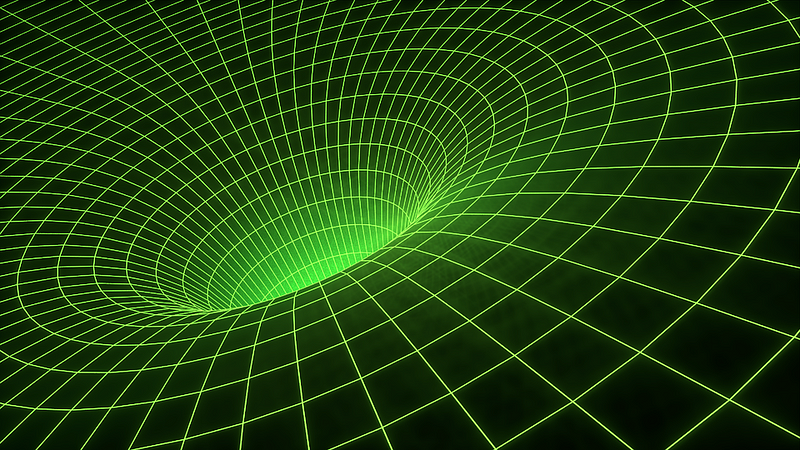
If you’re far away from the black hole, you can approximate space as not accelerating where you are, and so observers nearby will all agree with one another when they refer to the quantum vacuum. But when you consider the quantum vacuum near the black hole’s event horizon — in other words, in a region of space where the curvature is severely non-flat — the quantum vacuum appears to be in an excited state.
Why? Because your view of what appears flat is different than an observer who’s near the event horizon. In order to transform from their perception of flat (which is curved to you) to your frame-of-reference, you have to calculate what you’d perceive differently from what they’d perceive. Whereas they’d just see empty space, you, from far away, see copious amounts of radiation emanating from the curved space near the event horizon.
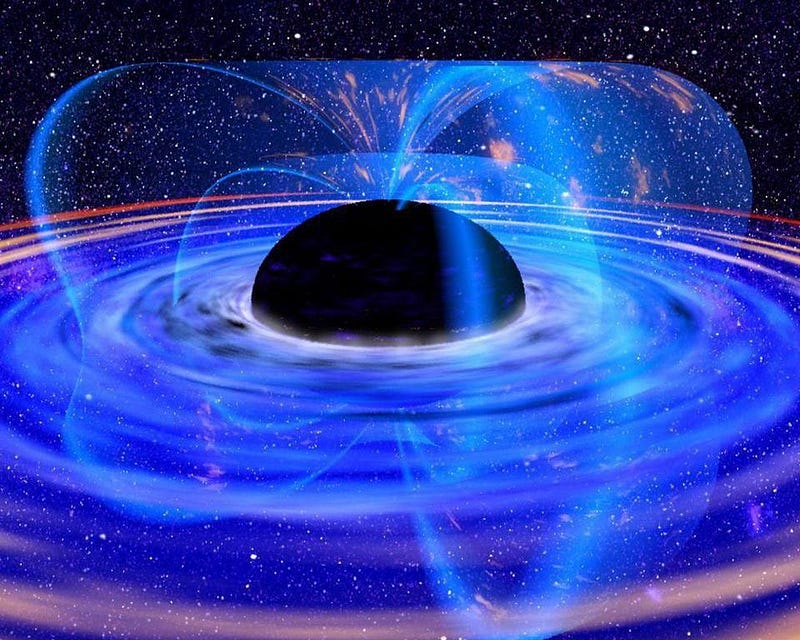
This is what Hawking radiation actually is: the radiation you’d observe because your perception of the quantum vacuum is different in flat space than it is in curved space. This is a more correct way of visualizing Hawking radiation than Hawking’s own explanation of particle-antiparticle pairs created near a black hole, where one falls in and the other escapes, for the following set of reasons:
- Hawking radiation is almost exclusively photons, not particles or antiparticles,
- Hawking radiation doesn’t all originate from the event horizon, but from within about 10–20 Schwarzschild radii of the event horizon,
- if you calculate the energies of particle-antiparticle pairs that arise near the event horizon by combining quantum mechanics and General Relativity, you get the right average value but the wrong energy spectrum; you need to eschew Hawking’s explanation to get the right answer.
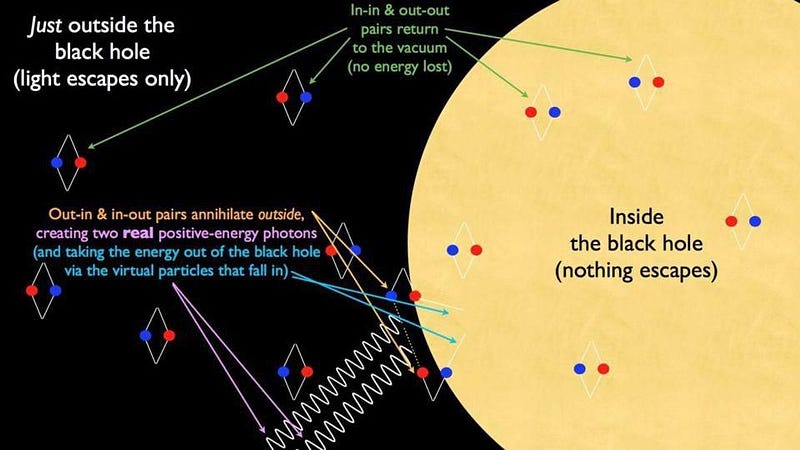
But this is a real form of radiation. It has real energies and a calculable energy distribution for its photons, and you can calculate both flux and temperature of this radiation based on the black hole’s mass alone. Perhaps counterintuitively, the more massive black holes have smaller amounts of lower-temperature radiation, while lower-mass black holes decay more quickly.
This can be understood once you realize that Hawking radiation is strongest where space is the most severely curved, and more severe spatial curvature occurs closer to a singularity. Smaller mass black holes mean smaller volume event horizons, and that means more Hawking radiation, faster decays, and higher-energy radiation to look for. With the right long-wavelength, large-diameter telescope, we may someday be able to observe it.
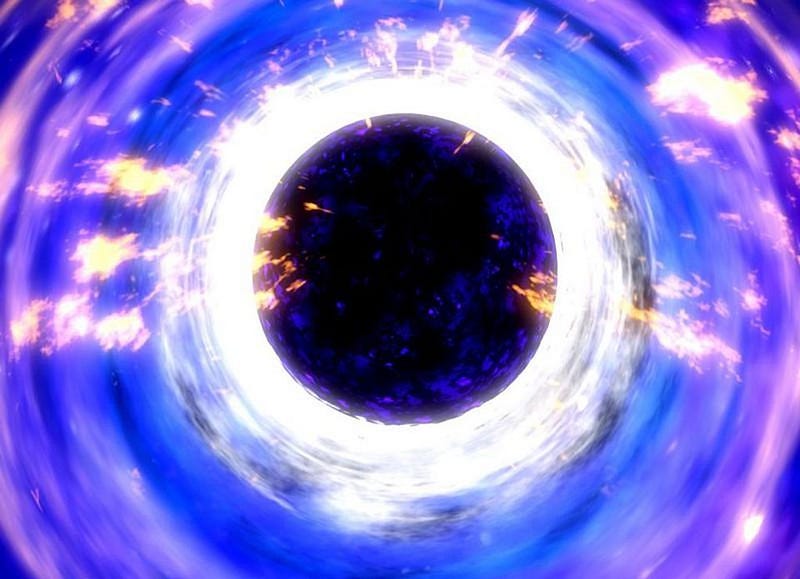
If you have an astrophysical object that emits radiation, that immediately defies the definition of black: where something is a perfect absorber while itself emitting zero radiation. If you’re emitting anything, you aren’t black, after all.
So it goes for black holes. The most perfectly black object in all the Universe isn’t truly black. Rather, it emits a combination of all the radiation from all the objects that ever fell into it (which will asymptote to, but never reach, zero) along with the ultra-low-temperature but always-present Hawking radiation.
You might have thought that black holes truly are black, but they aren’t. Along with the ideas that black holes suck everything into them and black holes will someday consume the Universe, they’re the three biggest myths about black holes. Now that you know, you’ll never get fooled again!
Ethan Siegel is the author of Beyond the Galaxy and Treknology. You can pre-order his third book, currently in development: the Encyclopaedia Cosmologica.





